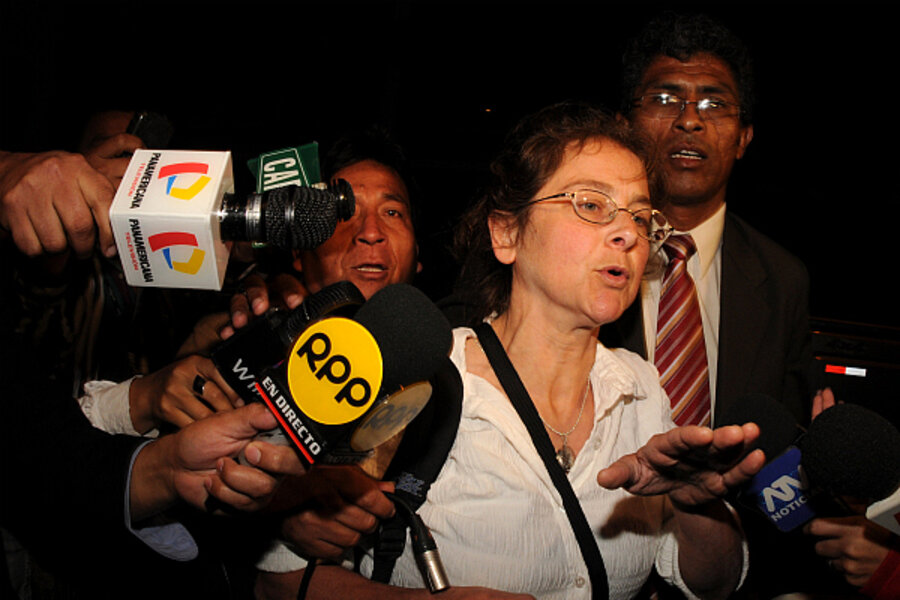In Peru, Lori Berenson's parole spurs concern that former rebels could be freed
Loading...
Lori Berenson, a US woman serving 20 years in prison in Peru on terrorism charges, was paroled late Monday afternoon just weeks shy of the anniversary of her arrest 15 years ago.
Her release from the women’s prison in Lima’s seaside Chorrillos district was a familiar scene, following nearly the same script from last May, when Ms. Berenson was first paroled. Her conditional freedom – Berenson must remain in Peru until her full sentence is up – was revoked in August on a technicality. She returned to prison with her 17-month-old son.
In the new parole hearing on Nov. 5, Judge Jessica León handed down an expanded version of her May decision, stating that Berenson had completed 75 percent of her sentence through a combination of time served and benefits from schooling and work, thereby meeting the principal criteria for parole under legislation that has since been repealed for convicted terrorists.
The state’s prosecutor for terrorism cases, Julio Galindo, again expressed indignation, claiming the judge had made a mockery of justice by liberally interpreting the law not once but twice.
“The benefits for inmates who work and study do not apply to terrorists. Judge León knows this and has made the same serious mistake a second time,” said Mr. Galindo.
Galindo appealed the ruling, as he did in May, presenting supporting arguments also this afternoon.
This time it's different
Berenson’s case now goes to the same court that sent her back to prison in August, but there is a big difference this time.
The court in August ruled on a technicality, ordering Berenson back to prison because of a mix up with the address of the house she moved to once released. In the new hearing the three-judge panel will have to rule on the substantive issue of time served and the decision will be watched closely, because of the impact it could have on other inmates serving terrorism sentences.
The local media, following Galindo’s lead that the judge is the “patron saint of terrorists,” ran banner headlines claiming that terrorists would soon be roaming the streets, threatening the safety of Peru’s 30 million people and jeopardizing the country’s hard-won economic progress.
Berenson not a favorite in Peru
Public opinion is decidedly against Berenson, who has come to portray Peru’s legacy of terrorism violence even though she played only a minor part in war waged against the state by the rebel Tupac Amaru Revolutionary Movement (MRTA).
“These terrorists should not go free. They don’t deserve any special treatment,” said Javier Muñoz, who works at a parking garage near the women’s prison.
Berenson arrived in Peru in 1994, two years after most of the Marxist MRTA’s leaders had been arrested and sentenced to life in prison. She was recruited for renting a safe house where the outlawed party was training fighters and planning to take over Congress. The plan was foiled in a raid that included the arrests of Berenson and MRTA militants.
She was sentenced to life in prison by a tribunal of hooded military judges in early 1996. That sentenced was annulled in 2000 and she was ordered retried. She received the current 20-year sentence on the charge of collaboration in 2001.
The MRTA’s last major action came in late 1996, when a group of 14 rebels took hostages at the Japanese ambassador’s residence. The standoff lasted until the following April, ending with a military raid that free all but one hostage. The 14 subversives were killed.





